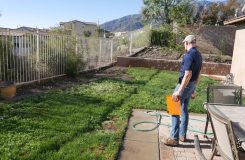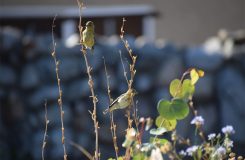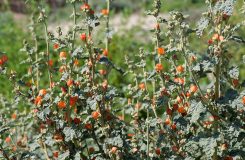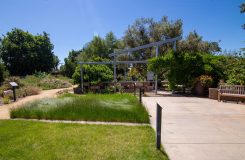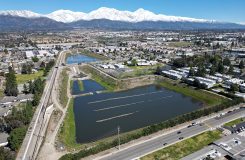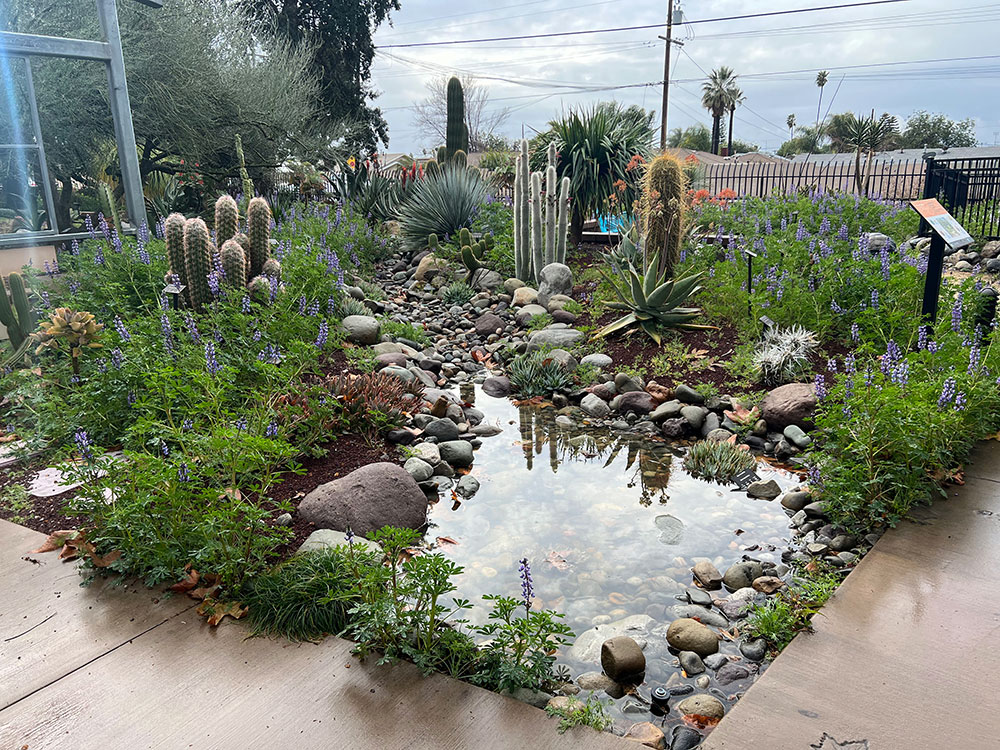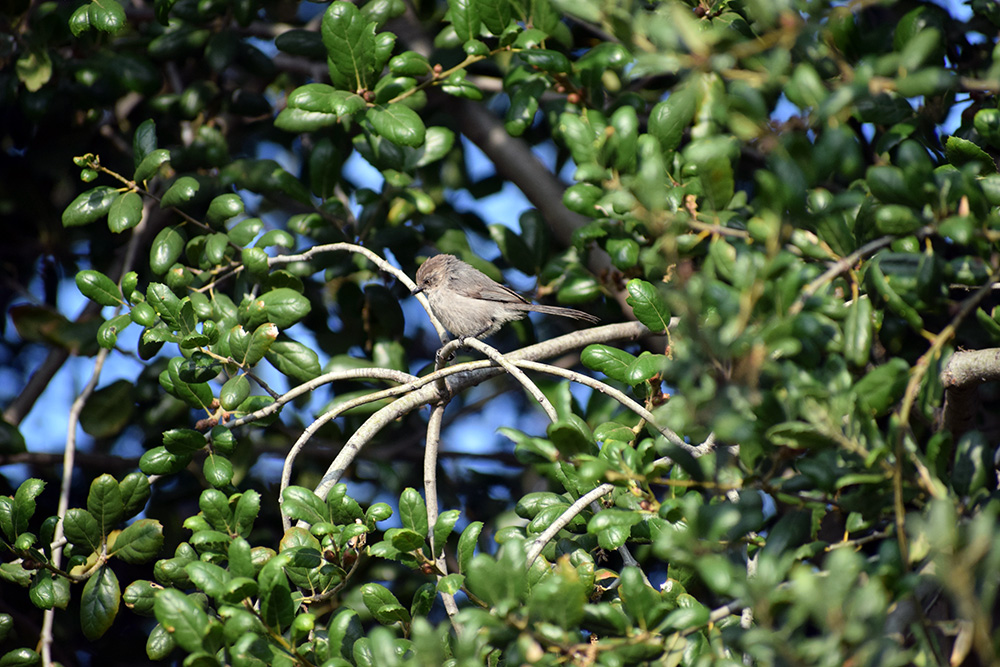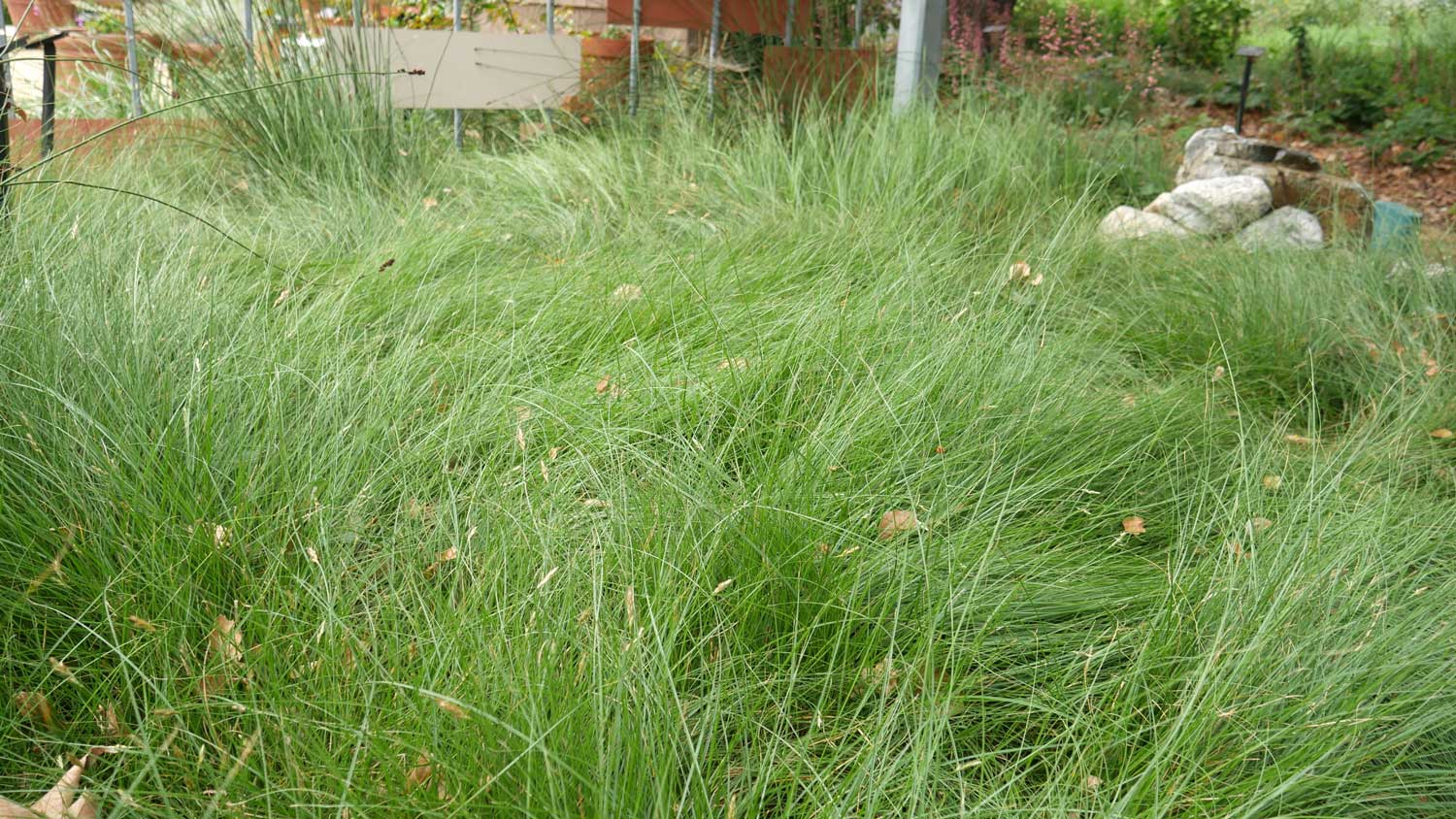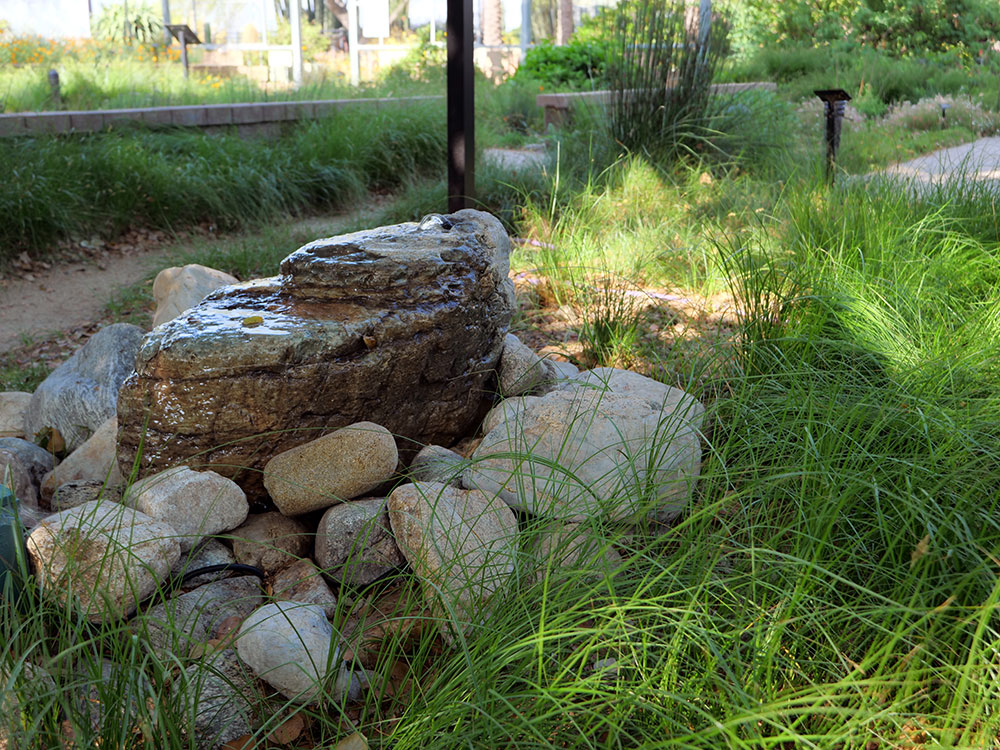Dry Streambeds
Dry streambeds are beautiful and functional
They capture rainwater, filter pollutants, and replenish local groundwater. Large or small, dry streambeds help absorb runoff and protect our local water supply.
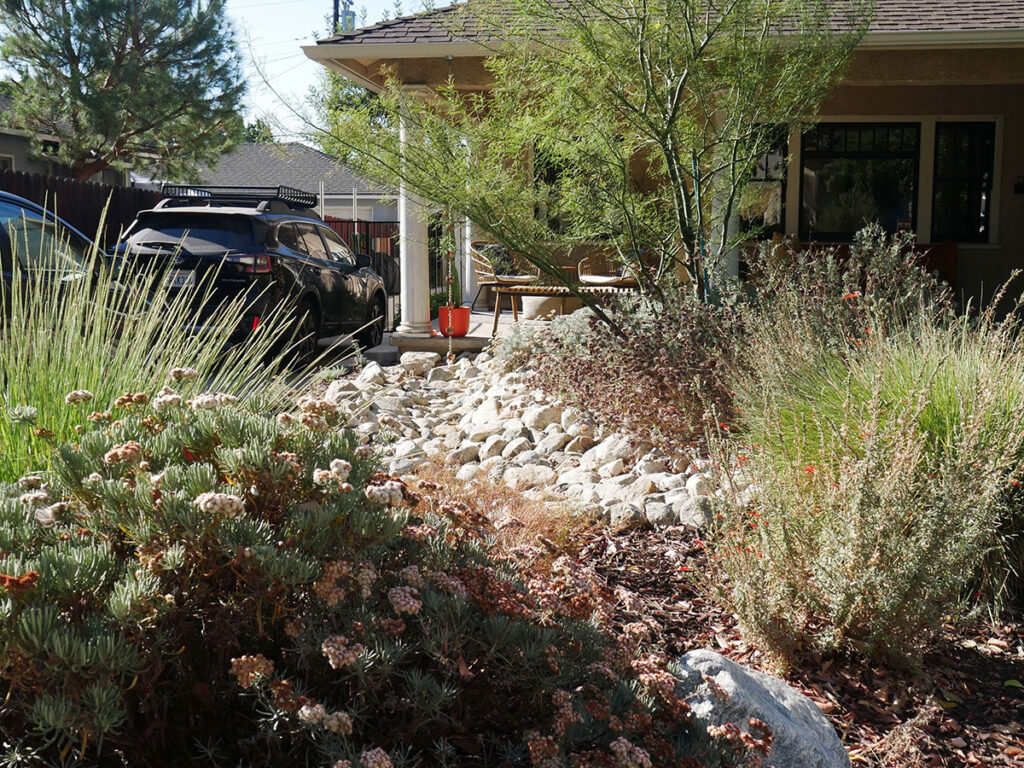
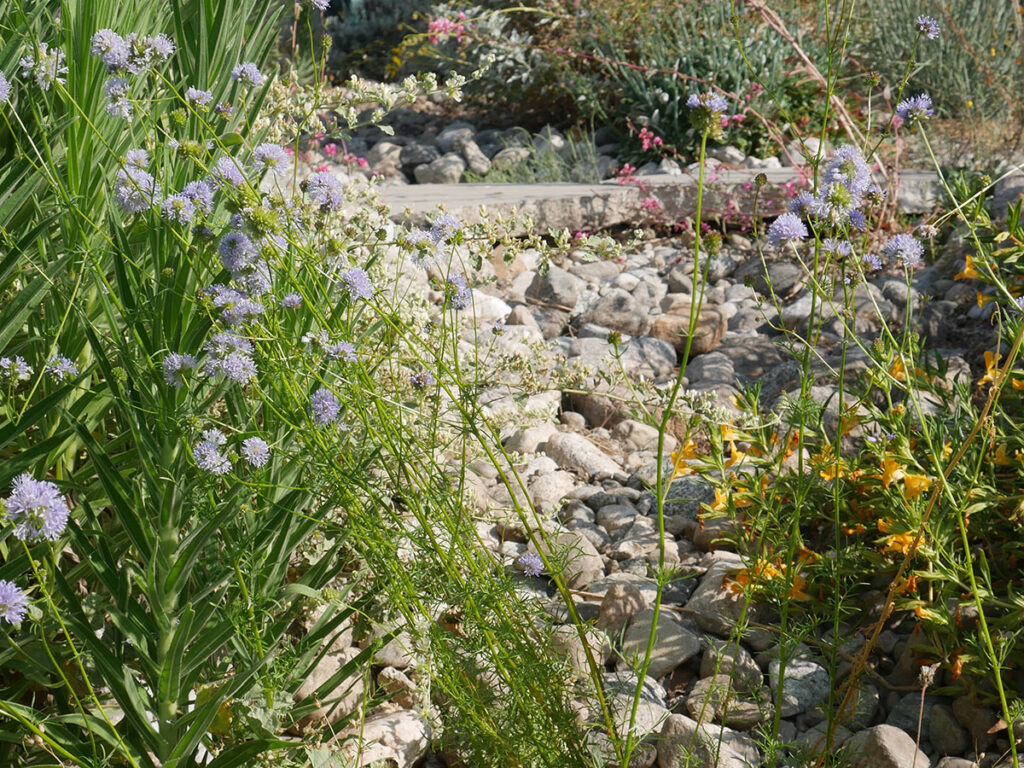



DIY dry streambeds
You can make a do-it-yourself (DIY) dry streambed like this to hydrate your garden and help recharge local aquifers. Use our waterwise resources to help make all of your DIY gardening projects successful.
Observe where rain accumulates—around downspouts, the driveway, your neighbor’s yard. How much water is there? Before you dig, locate buried utilities by calling DigAlert at 811.
Choose a place to sink the collected water, at least 10 feet from building foundations. Beginning at the roof downspouts, start with a narrow streambed and widen as you go.
As you dig, you will accumulate extra soil. Use it on the downslope side to build up a berm or mini-dam to capture water and let it soak in. Use various sizes of river rock or granite, large and small gravel, cobblestones, and small boulders.
Keep an eye on your finished streambed during its first rainfall. Does it hold water and overflow as expected? Modify it as needed to make improvements.
-
Put water from your roof to work
You can make a do-it-yourself (DIY) dry streambed like this to hydrate your garden and help recharge local aquifers. Use our waterwise resources to help make all of your DIY gardening projects successful. -
Plan
Observe where rain accumulates—around downspouts, the driveway, your neighbor’s yard. How much water is there? Before you dig, locate buried utilities by calling DigAlert at 811. -
Design
Choose a place to sink the collected water, at least 10 feet from building foundations. Beginning at the roof downspouts, start with a narrow streambed and widen as you go. -
Build
As you dig, you will accumulate extra soil. Use it on the downslope side to build up a berm or mini-dam to capture water and let it soak in. Use various sizes of river rock or granite, large and small gravel, cobblestones, and small boulders. -
Test
Keep an eye on your finished streambed during its first rainfall. Does it hold water and overflow as expected? Modify it as needed to make improvements.
Get Started

For a step-by-step tutorial on how to build your own dry streambed, check out our Build a Functional Dry Streambed video on our YouTube playlist.
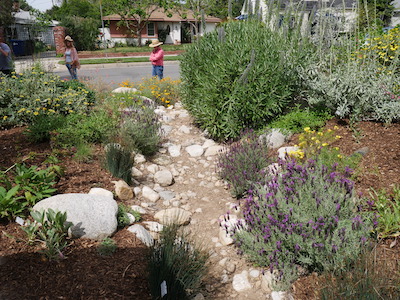
For detailed information on water-harvesting for your landscape, including designing and installing dry streambeds, French drains, and infiltration basins, join our Rainwater Harvesting workshop or watch it on demand.


